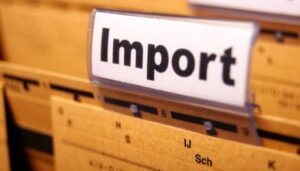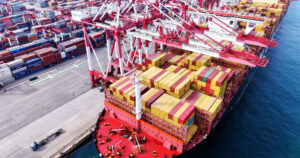
China’s actual gold purchases this year may exceed officially declared volumes by several times and have already become one of the key drivers of record growth in precious metal prices, the Financial Times writes, citing analysts and market data.
According to official statistics from the People’s Bank of China, in 2025 the regulator purchased only about 25 tons of gold, with an increase in reserves of approximately 2 tons in some months. However, analysts at Société Générale, assessing trade flows of large bars and import data, believe that Beijing’s actual purchases could reach up to 250 tons per year, or more than a third of the total demand of global central banks. According to their estimates, actual purchases may exceed the officially disclosed figures by ten times or more.
Bruce Ikemizu, director of the Japan Precious Metals Market Association, said that market participants this year “practically do not believe official statistics, especially for China,” and estimates the country’s current gold reserves at nearly 5,000 tons — about twice the level reported publicly by the Chinese authorities.
According to the FT and experts, a significant portion of purchases are made opaquely — through the State Administration of Foreign Exchange (SAFE), the sovereign wealth fund China Investment Corporation, and other entities that are not required to publish detailed reports on gold reserves. This makes it difficult to assess the real scale of operations and increases market uncertainty.
Analysts note that the secretive accumulation of gold is linked to a strategy of de-dollarization. “China is buying gold as part of its strategy to reduce its dependence on the dollar,” the press quotes Jeff Currie, a strategist at Carlyle, as saying. Gold is seen as a hedge against currency and geopolitical risks, including against the backdrop of tensions with the US.
According to estimates by the World Gold Council, over the past decade, the share of gold in the international reserves of countries outside the US has grown from about 10% to 26%, making the metal the second most important reserve asset after the US dollar. Large-scale purchases by central banks have helped push the price of gold above $4,300 per troy ounce, according to the FT and industry publications.
China remains the world’s largest producer and consumer of gold, accounting for about 10% of global production, which allows Beijing to increase its reserves not only through imports but also through the domestic market.

The volume of passenger car imports to Ukraine, including cargo-passenger vans and racing cars (UKT ZED code 8703), in January-October 2025 amounted to almost $4.82 billion, which is 32.6% more than in the same period of 2024 ($3.63 billion) and 10% more than in the whole of 2024.
According to statistics released by the State Customs Service of Ukraine, the growth rate of passenger car imports has thus accelerated, reaching 27.4% in the first nine months of the year compared to the same period in 2024.
In October this year, passenger cars worth $647.8 million were imported into Ukraine, which is 81% more than in October last year.
The top three suppliers of cars to Ukraine in January-October this year were Germany, the US, and China, while last year they were the US, Germany, and Japan. In particular, car deliveries from Germany increased by 52% to $841.3 million, and their share in the structure of car imports was 17.45% compared to 15.23% a year earlier.
Cars worth $839.7 million (25.4% more) were imported from the US to Ukraine, and $663 million (13.8% of passenger car imports) from China. Last year, imports from Japan, which was among the top three leaders, amounted to almost $430 million (11.8%).
Imports of passenger cars from other countries during the period amounted to $2.476 billion, compared to $1.981 billion in January-October 2024.
At the same time, in the first 10 months of this year, Ukraine exported only $7.17 million worth of such vehicles, in particular to the UAE, Canada, and the US, while a year ago, during the same period, the country supplied $9.33 million worth of such vehicles to foreign markets, mainly to Canada, Germany, and the US.
According to the State Customs Service, in the overall structure of imports of goods to Ukraine in January-October 2025, the share of passenger cars was 7.1% (6.3% last year), and in the structure of exports – 0.02% (0.03%).
As reported, in 2024, passenger cars worth $4.385 billion were imported into Ukraine, which is 8% more than a year earlier, and $10.1 million worth were exported (2.7 times less).

The volume of tractor imports to Ukraine in January-October 2025 amounted to $703.83 million, which is 6.6% more than in the same period of 2024 ($660.51 million), according to statistics from the State Customs Service.
According to the published statistics, tractors were mainly imported from the US (22% of total imports of this equipment, or $154 million), China (17.2% or $121.1 million), and Germany (16.4% or $115.6 million), while last year Germany was the leader ($101.5 million), China was second ($91.6 million), and the US was third ($86.9 million).
At the same time, imports from other countries in January-October decreased by 17.7% to $313.1 million.
In October this year, tractor imports to Ukraine increased by 9.1% compared to October 2024, to $73.8 million, which is also slightly higher than in September 2025.
Since the beginning of this year, as reported, tractor imports to Ukraine have shown negative dynamics: in January, they were one-third lower than in January 2024, but by the end of the first half of the year, the figures were almost equal to last year’s.
According to statistics from the State Customs Service,
this year, tractors worth $5.1 million were exported in January-October, mainly to Romania (25%), Belgium, and Germany, while last year during this period, exports amounted to $4.6 million, mainly to Moldova (25.6%), the Czech Republic, and Kazakhstan.
As reported, tractor imports to Ukraine in 2024 amounted to almost $784 million, 5.6% less than a year earlier, while exports amounted to $5.44 million compared to $5.74 million.

Imports of goods to Ukraine in January-October 2025 reached $67.8 billion, which is 18.1% more than a year earlier, according to the State Customs Service. The largest countries of origin for imports were China with $15.1 billion,
Poland with $6.4 billion, and Germany with $5.4 billion.
Taxable imports amounted to $51.8 billion, or 76% of the total volume. The tax burden per 1 kg of taxable imports was $0.52/kg.
In terms of commodity structure, 68% was accounted for by machinery, equipment, and transport—$27 billion (customs payments—168 billion UAH, 29%); chemical industry products—$10.4 billion (81.1 billion UAH, 14%); fuel and energy products – $8.5 billion (UAH 167.9 billion, 29%).
Source: https://expertsclub.eu/import-v-ukrayinu-zris-na-18-lidyruyut-kytaj-polshha-nimechchyna/

The European Union is facing a serious crisis in the supply of critical materials after the decision of the Chinese government to impose new export restrictions on rare-earth magnets and raw materials for their production, reports Politico.
As noted, Beijing’s decision in early October has escalated the trade standoff with the United States and created risks for European industry, which is almost entirely dependent on imports of such elements from China.
“A crisis in the supply of critical raw materials is no longer a remote risk. It is already on our doorstep,” European Commission President Ursula von der Leyen told MEPs on the eve of the EU summit.
She emphasized the need for “decisive and urgent action” to ensure faster and more reliable supplies of critical materials “both within Europe itself and from trusted partners.”
European Trade Commissioner Maroš Šefčovič said the EU was not interested in escalating tensions, but emphasized the need to resolve the situation quickly. “However, this situation casts a shadow on our relations. Therefore, a quick solution is essential,” he said.
Šefčovič said China and the EU will “strengthen contacts at all levels” to discuss the restrictions. Chinese Commerce Minister Wang Wentao is due to arrive in Brussels for consultations in the coming days.
“The European Union is also holding talks with the G7 countries on an agreed response to the crisis ahead of a ministerial meeting to be held October 30-31 in Canada,” the report said.
Earlier, the information and analytical center Experts Club analyzed the global market of rare earth metals of the world and Ukraine, the video is available here -.
https://youtu.be/UHeBfpywpQc?si=0L-2nSUrLlIbqVZ5?si=Fk6Oi_13NKpEW81K
CHINA, EUROPEAN UNION, EXPERTS CLUB, EXPORT, rare earth elements

In September, the Chinese economy showed higher-than-expected growth rates in industry and retail trade, indicating a gradual recovery in domestic demand and business activity.
According to the National Bureau of Statistics of China, industrial production grew by 6.5% year-on-year, the highest rate since June. In August, growth was 5.2%, and analysts had expected a slowdown to 5%.
The largest contributors were:
manufacturing — +7.3%,
mining — +6.4%,
oil and gas — +8.9%,
automobile production — +16%,
computers and telecommunications equipment — +11.3%.
Growth was recorded in 36 of 41 sectors of the economy. Overall, industrial production increased by 6.2% in the first nine months of 2025 compared to the same period last year.
Retail sales in September grew by 3% year-on-year. This is slightly less than in August (3.4%), but still better than analysts’ forecasts (2.9%).
The largest increases were in sales of food products (+6.3%), jewelry (+9.7%), and clothing (+4.7%). Car sales rose by 1.6%, while petroleum product sales fell by 7.1%.
Since the beginning of the year, retail turnover has reached 36.6 trillion yuan (about $5.1 trillion), which is 4.5% more than a year earlier.
Investments in fixed assets as a whole declined slightly, by 0.5%, mainly due to a decline in the construction sector (-13.9%). At the same time, investments in infrastructure and manufacturing grew by 1.1% and 4%, respectively.
The unemployment rate in September fell to 5.2% from 5.3% a month earlier.
Experts from the Experts Club analytical center note that the Chinese economy remains stable despite the slowdown in global demand and difficulties in the real estate sector.
Reference: Experts Club.
For several years now, China has ranked first in the world in terms of economic size, calculated in terms of purchasing power parity (PPP), ahead of the US and the EU. This confirms its status as the largest industrial and consumer center on the planet.